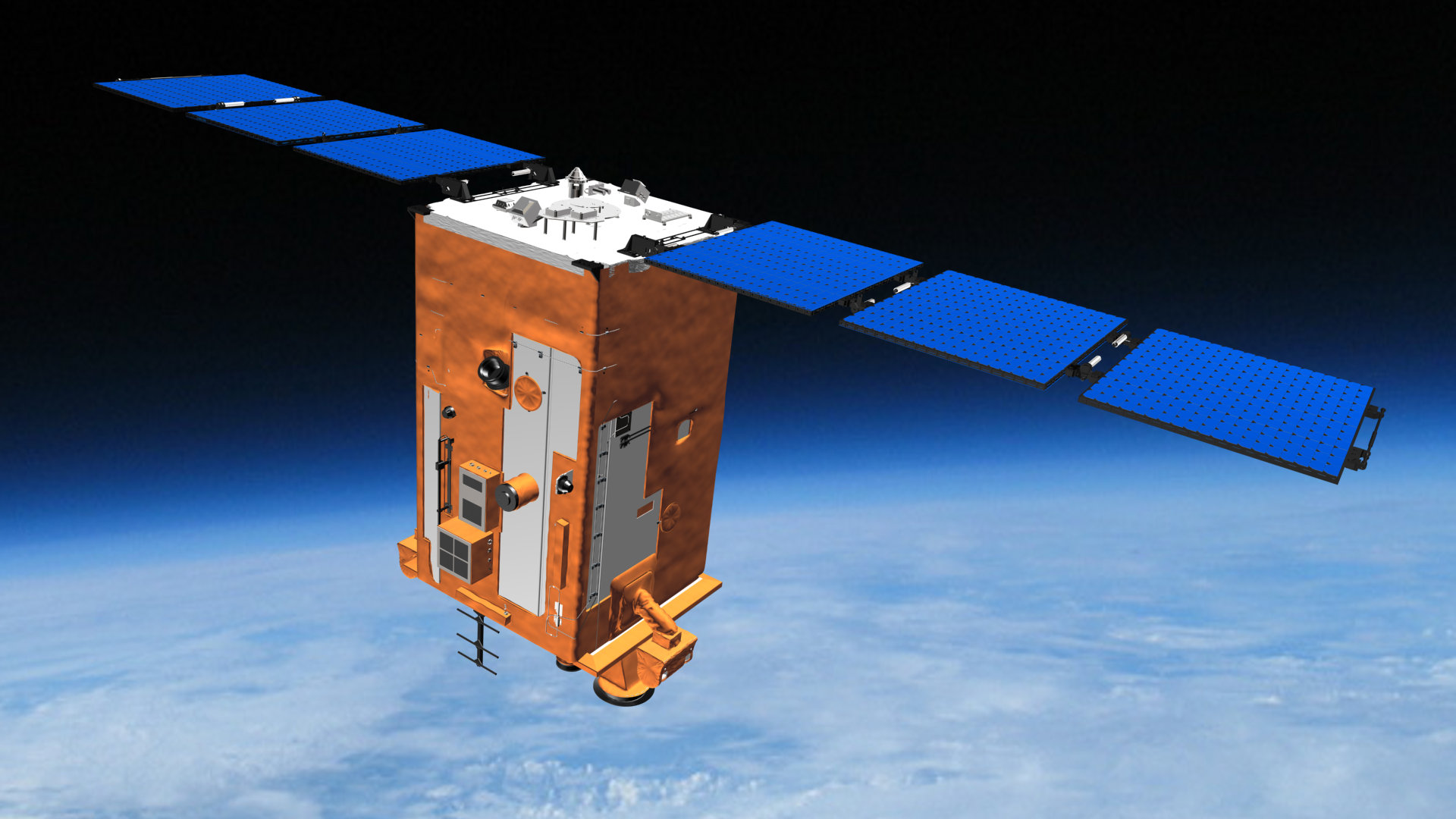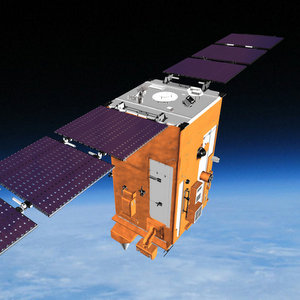
On April 28, 2016, in the presence of the President of Russia, “Aist 2D” was launched into orbit during the first launch campaign from the new Russian cosmodrome “Vostochny”. At the stage of its development, the period of active existence of the satellite was set as 3 years, but it exceeded this period by almost 2.7 times, falling short of its 8th anniversary in just 12 days. However, the satellite equipment worked regularly until the very end.
Ivan Tkachenko, Deputy Rector, Director of Samara University’s Institute of Aerospace Engineering (IAE), was the responsible executor of the project “Aist 2”. In November 2023, he predicted that “Aist 2D” would complete its work in the spring of 2024. This was indicated by gradual changes in the parameters of the satellite orbit, which could not be corrected, since the experimental technological device had no propulsion system.
“It left its orbit. It fell short of its 8th birthday in a little less than two weeks. It worked properly until the last moment”, commented Ivan Tkachenko.
Despite the fact that “Aist 2D” weighed only 531 kg, its target equipment provided optical, infrared and radar monitoring of the Earth’s surface with very good parameters. For example, the optoelectronic equipment “Avrora” had resolution of about 1.5 m in the panchromatic channel, and about 4.4 m – in the multispectral channel, with its coverage band of about 40 km.
Over 8 years of operation, “Aist 2D” sent images of more than 93 million km2 of the Earth’s surface to the Data Reception and Processing Centre of the RSC “Progress”. This information helped in solving various socio-economic problems.
“Aist 2D” monitored destruction of the infrastructure and engineering facilities. The satellite was useful for controlling floods, detecting illegal mining sites, and illegal garbage dumps. According to its images, wildfires and volcanic activity, as well as urban development, were monitored. “Aist 2D” was involved in educational and many other projects. However, this does not exhaust benefits of creating the satellite.
“The Rocket and Space Centre “Progress”, which has been building full-size the Earth remote sensing devices for decades, engaged development of “Aist 2D” in working out design solutions and mastering the technology of manufacturing small-sized spacecrafts. This means taking a worthy place in the global trend of world cosmonautics”, emphasized Ivan Tkachenko. “As for Samara University, we are likely to have even more important result of this project, which is not only implementation of our ideas or active participation of our scientists, postgraduate students, and students in developing the modern satellite, but also establishment of the modern production and test complex in the University campus (EIK-3). On its basis, we currently develop the cyber-physical factory of the Advanced Aerospace Engineering School”.
The set of scientific equipment developed at Samara University’s Institute of Space Instrumentation Engineering (ISIE) included five devices to provide studies of both outer space itself and its effects on materials and electronics.
“Designing such a diverse set of scientific instruments intended for the satellite “Aist 2D” has allowed our team to rise to the next, higher level of competence. We have tested new technical solutions, gained very important experience in developing both unified service modules and unique measuring units, structures with elements of primary processing”, said Konstantin Voronov, Director of the Institute of Space Instrumentation Engineering.
Over 8 years of the “Aist-2D” flight, a large amount of information was accumulated, which was studied both at Samara University and outside of it, and was considered when target and scientific equipment for other satellites to be developed.
“The analyzed data to be collected during this time by our equipment has significantly expanded the understanding of how the outer space factors affect space technology, in what conditions it has to function. At the same time, it also revealed the points to have fallen out of our consideration when we designed the devices. In general, we regard the result as positive. Moreover, we comprehend the flight of “Aist 2D” as not only huge positive experience, knowledge of ongoing processes, new data, but also as formation of our team’s confidence in own abilities, in the capability and willingness to solve non-standard tasks”, noted Konstantin Voronov.
Samara University involved in implementing the project “Aist-2” the most competent specialists.
“After the successful launch of two “Aists” of the first series, each weighing 50 kg, participation of the University in such a serious project as “Aist 2D” became a big step forward. Other scales, the most complex, versatile engineering tasks that we have not dealt with before”, recalls Evgeny Shakhmatov, Academician of the Russian Academy of Sciences, Supervisor for Science at Samara University. “Our best scientific forces have concentrated around this project. Its main driving force was Aleksander Nikolayevich Kirilin, who then headed JSC RSC “Progress” and the Department of Space Engineering, no doubt about it. He promoted and defended the project with all his authority. A lot of energy, knowledge and practical experience were invested in developing “Aist 2D” by professors of this Department Vadim Viktorovich Salmin and Sergey Ivanovich Tkachenko, Deputy General Designer for Scientific Work at JSC RSC “Progress” Ivan Sergeyevich Tkachenko, a young scientist at that time, and now Deputy Rector, Institute of Aerospace Engineering, actively worked on the project as a responsible executor. Many wonderful specialists, both at the University and at the enterprise, generally have grown up participating in “Aist 2D”.
Long-term operation of “Aist 2D” proved that the technical solutions embedded in it were correct and promising. The platform turned out to have great capacity for further use. Currently, the specialists of JSC RSC “Progress” continue to work on the project of the space complex for the Earth remote sensing of stereoscopic survey “Aist”, which includes two small-sized spacecrafts “Aist 2T”. The launch and deployment of this orbital grouping are scheduled for the autumn of 2024.
For reference:
The Space Complex “Aist 2”
It was designed under the project “Development of high-tech production of small-sized observation spacecrafts using hyperspectral equipment in the interests of socio-economic evolution of Russia and international cooperation”. The project was implemented under the Resolution No. 218 dated April 09, 2010, issued by the Government of the Russian Federation.
The customer and lead contractor for the “Aist 2D” small-sized spacecraft for the Earth remote sensing (technology demonstrator) is JSC “Rocket and Space Centre “Progress”.
The head contractor for the scientific equipment of the spacecraft “Aist 2D” is Samara National Research University.
Scientific supervisors of the project “Aist 2”:
Salmin Vadim Viktorovich, Doctor of Technical Sciences, Professor of General Designer D.I. Kozlov Department of Space Engineering;
Tkachenko Sergey Ivanovich (1950–2017), Doctor of Technical Sciences, Professor of General Designer D.I. Kozlov Department of Space Engineering, Deputy General Designer for Scientific Work of JSC RSC “Progress”.
Responsible executor:
Tkachenko Ivan Sergeyevich, Candidate of Technical Sciences, Associate Professor, Deputy Rector, Director of Institute of Aerospace Engineering, Director of the Advanced Aerospace Engineering School.
The small-sized spacecraft for the Earth remote sensing “Aist 2D” (technology demonstrator):
- total weight: 531.4 kg;
- platform weight: 250 kg;
- average altitude of the orbit: 490 km;
- orbital inclination: 97.3 degrees.
- optoelectronic equipment (OEE) “Avrora”;
- Infrared imaging equipment;
- X-band radar surveillance equipment.
- the band width: 39.7 km;
- resolution for the panchromatic channel when shooting from the near-circular orbit with its height of 490 km: 1.48 m;
- resolution for the multispectral channel (the same orbit): 4.4 m.
- Mass spectrometric sensor DMS-01;
- Particle sensor DCH-01;
- Equipment “Meteor-M”;
- Micro-acceleration compensator KMU-1;
- Combined experimental equipment (KEA).
